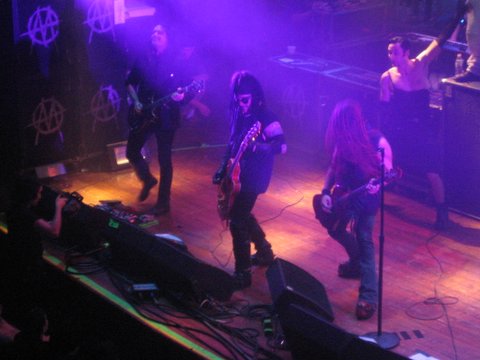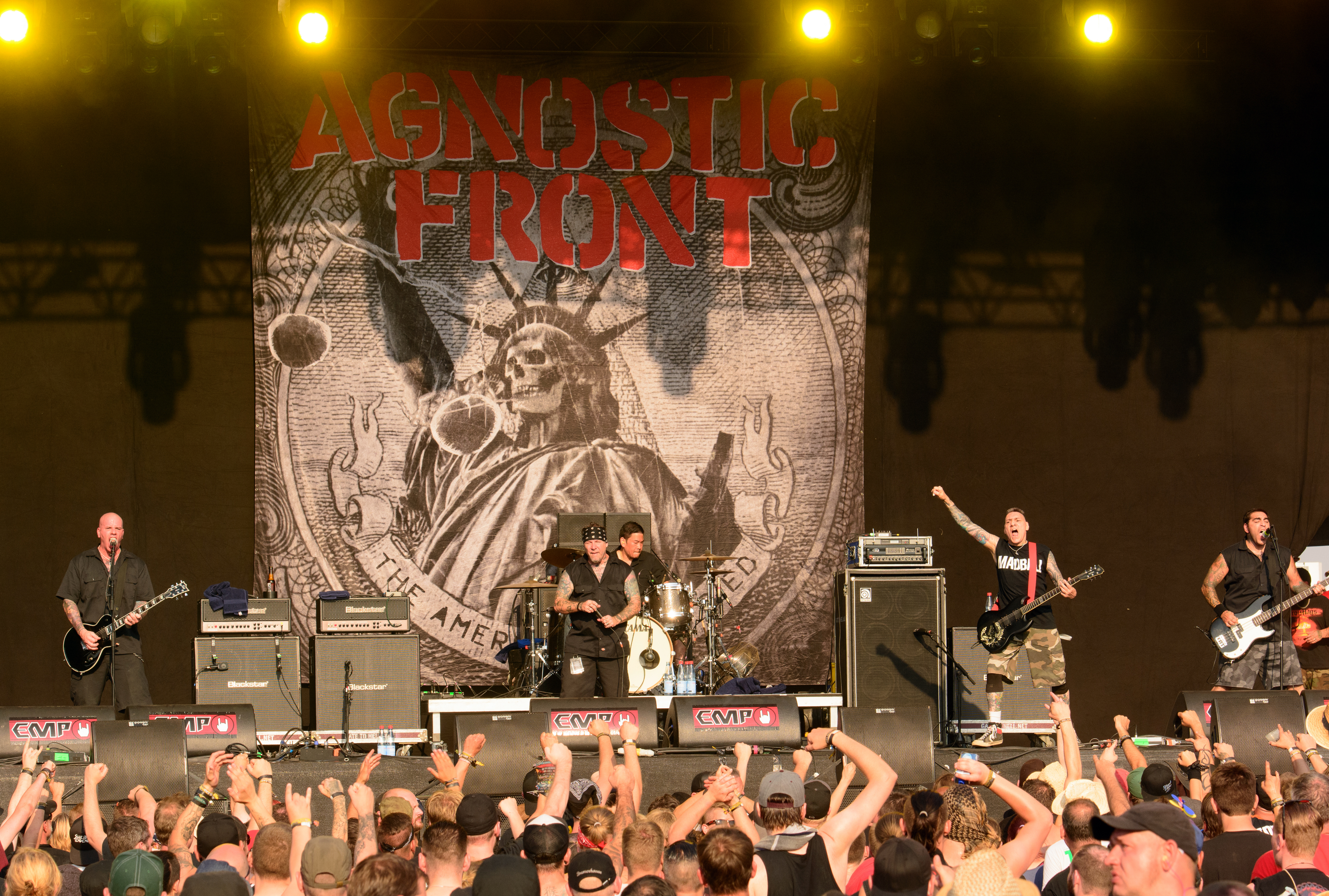|
The Artificial Theory For The Dramatic Beauty
''The Artificial Theory for the Dramatic Beauty'' is the debut EP by Japanese metalcore band Crossfaith Crossfaith (Japanese: クロスフェイス) is a Japanese metalcore band from Osaka that was formed in 2006. Since its formation, the band has retained the same line-up with no member changes, which currently consists of vocalist Kenta Koie, g .... It was released on 29 April 2009 through Zestone Records and Gan-Shin. Track listing Personnel Crossfaith * Kenta Koie – lead vocals * Kazuki Takemura – guitars * Terufumi Tamano – keyboards, programming, samples, backing vocals * Hiroki Ikegawa – bass * Tatsuya Amano – drums References {{DEFAULTSORT:Artificial Theory for the Dramatic Beauty 2009 debut EPs Crossfaith EPs ... [...More Info...] [...Related Items...] OR: [Wikipedia] [Google] [Baidu] |
Crossfaith
Crossfaith (Japanese: クロスフェイス) is a Japanese metalcore band from Osaka that was formed in 2006. Since its formation, the band has retained the same line-up with no member changes, which currently consists of vocalist Kenta Koie, guitarist Kazuki Takemura, bassist Hiroki Ikegawa, drummer Tatsuya Amano and keyboardist Terufumi Tamano. They are characterized by performing a style of metalcore with dubstep and other forms of electronic music influences, and for their intense live performances. Crossfaith released their first demo ''Blueprint of Reconstruction'' in 2008. The band later released their debut EP ''The Artificial Theory for the Dramatic Beauty'', through Zestone Records in 2009, and debut full-length studio album ''The Dream, the Space'' in 2011 through Tragic Hero Records. Crossfaith then released their second EP ''Zion'' in September 2012; this acted as a promotional release to countries outside Japan. History Early years, ''The Artificial Theory for the ... [...More Info...] [...Related Items...] OR: [Wikipedia] [Google] [Baidu] |
Metalcore
Metalcore (also known as metallic hardcore) is a fusion music genre that combines elements of extreme metal and hardcore punk. As with other styles blending metal and hardcore, such as crust punk and grindcore, metalcore is noted for its use of breakdowns, slow, intense passages conducive to moshing. Other defining instrumental qualities include heavy riffs and stop-start rhythm guitar playing, occasional blast beats, and double bass drumming. Vocalists in the genre typically use thrash or scream vocals. Some later metalcore bands combine this with clean singing, often during the chorus. Death growls and gang vocals are common. 1990s metalcore bands were inspired by hardcore while later metalcore bands were inspired by melodic death metal bands like At the Gates and In Flames. The roots of metalcore are in the 1980s when bands would combine hardcore punk with heavy metal. This included New York hardcore bands like Agnostic Front, Cro-Mags, and Killing Time, British har ... [...More Info...] [...Related Items...] OR: [Wikipedia] [Google] [Baidu] |
Electronicore
Electronicore (also known as synthcore or trancecore) is a fusion genre of metalcore with elements of various electronic music genres, often including trance, electronica, and dubstep. Reception Sumerian Records noted in the late 2000s that "there has been a surplus of electronica/ hardcore music as of late." Attack Attack! is often recognized as the primary American contributor of the style, being inspired by British band Enter Shikari. Enter Shikari is an electronicore band that began in 1999, adding their last member and transforming to "Enter Shikari" from "Hybryd" in early 2003, in St Albans, England.James Birtles, ''The Mancunion'Album: Enter Shikari – A Flash Flood of Colour The group has received international radio airplay and a substantial number of musical awards, from Kerrang!, NME, Rock Sound Magazine and BT Digital Music Awards. They express a relationship with electronic music genres such as trance and have been referred to as the "kings of trancecore." T ... [...More Info...] [...Related Items...] OR: [Wikipedia] [Google] [Baidu] |
Industrial Metal
Industrial metal is the fusion of heavy metal and industrial music, typically employing repeating metal guitar riffs, sampling, synthesizer or sequencer lines, and distorted vocals. Prominent industrial metal acts include Ministry, Nine Inch Nails, Marilyn Manson, Rammstein, Godflesh, and Fear Factory. Industrial metal developed in the late 1980s, as industrial and metal began to fuse into a common genre. Industrial metal did well in the early 1990s, particularly in North America, with the success of groups such as Nine Inch Nails, but its popularity began to fade in the latter half of the 1990s. History Early innovators Though electric guitars had been used by industrial artists since the early days of the genre, archetypal industrial groups such as Throbbing Gristle displayed a strong anti-rock stance. British post-punk band Killing Joke pioneered the crossing over between styles and was an influence on major acts associated with industrial metal such as Ministr ... [...More Info...] [...Related Items...] OR: [Wikipedia] [Google] [Baidu] |
Melodic Death Metal
Melodic death metal (also referred to as melodeath) is a subgenre of death metal that employs highly melodic guitar riffs, often borrowing from traditional heavy metal (including New Wave of British Heavy Metal). The genre features the heaviness of death metal but with highly melodic or harmonized guitar riffs and solos, and often features high-pitched shrieked vocals (differing from traditional death metal) alongside the low-pitched growls commonly featured in traditional death metal. Pioneered by the English heavy metal band Carcass with their 1993 album ''Heartwork'', melodic death metal developed further in Sweden (developed by bands like At the Gates, Dark Tranquillity, and In Flames) in the mid-1990s. The Swedish death metal scene did much to popularise the style, soon centering in the " Gothenburg metal" scene. At the Gates' ''Slaughter of the Soul'', Dark Tranquility's '' The Gallery'', and In Flames' ''The Jester Race'', all released in the mid-1990s, were highly influ ... [...More Info...] [...Related Items...] OR: [Wikipedia] [Google] [Baidu] |
Gan-Shin
is an independent European rock music record label. History It was formed in 2004 by Matthias Müssig, Christoph Ortner-Bach and Deville Schober. The label, actively distributes physical records in Germany, France, the United Kingdom, Italy, Spain and Scandinavia. Digitally they're mostly active in Europe but also distribute some band's like Matenrou Opera, angela and TeddyLoid almost worldwide. Gan-Shin Records exclusively signs bands from Japan, though has recently signed Madmans Esprit, a German-Korean based band. The label currently distributes the music of over 60 bands and artists throughout Europe. Bands overview * 12012 *abingdon boys school * An Cafe *angela * D * D'espairsRay *Dir en grey (transferred in 2009 to sister label Okami Records from the main label) *Domoto Tsuyoshi *DuelJewel *Gackt *Girugamesh * heidi. * Hyde * Ic5 * Kagerou *L'Arc-en-Ciel *LM.C * Madmans Esprit *Megamasso * Merry * Mix Speakers, Inc *Mucc *Nightmare *NoGoD * Rentrer en Soi * The Studs * V ... [...More Info...] [...Related Items...] OR: [Wikipedia] [Google] [Baidu] |
The Dream, The Space
''The Dream, the Space'' is the debut studio album by Japanese metalcore band Crossfaith. It was released on 20 April 2011 through Zestone Records in Japan and Tragic Hero Records worldwide. Critical reception The album received positive reviews from critics. ''Rock Sound'' gave it 8 out of 10 and said: "Blowing us away with their stunning ''The Artificial Theory for the Dramatic Beauty ''The Artificial Theory for the Dramatic Beauty'' is the debut EP by Japanese metalcore band Crossfaith Crossfaith (Japanese: クロスフェイス) is a Japanese metalcore band from Osaka that was formed in 2006. Since its formation, the ban ...'' at the tail end of last year, Crossfaith basically promise more of the same on this here follow up. Imagine if Bullet for My Valentine were to do all their shopping in Cyberdog and the results wouldn't be too far removed from what Crossfaith are offering; a near-perfect synthesis of technology and metal that should win the hearts and minds of r ... [...More Info...] [...Related Items...] OR: [Wikipedia] [Google] [Baidu] |
Metalcore
Metalcore (also known as metallic hardcore) is a fusion music genre that combines elements of extreme metal and hardcore punk. As with other styles blending metal and hardcore, such as crust punk and grindcore, metalcore is noted for its use of breakdowns, slow, intense passages conducive to moshing. Other defining instrumental qualities include heavy riffs and stop-start rhythm guitar playing, occasional blast beats, and double bass drumming. Vocalists in the genre typically use thrash or scream vocals. Some later metalcore bands combine this with clean singing, often during the chorus. Death growls and gang vocals are common. 1990s metalcore bands were inspired by hardcore while later metalcore bands were inspired by melodic death metal bands like At the Gates and In Flames. The roots of metalcore are in the 1980s when bands would combine hardcore punk with heavy metal. This included New York hardcore bands like Agnostic Front, Cro-Mags, and Killing Time, British har ... [...More Info...] [...Related Items...] OR: [Wikipedia] [Google] [Baidu] |
2009 Debut EPs
9 (nine) is the natural number following and preceding . Evolution of the Arabic digit In the beginning, various Indians wrote a digit 9 similar in shape to the modern closing question mark without the bottom dot. The Kshatrapa, Andhra and Gupta started curving the bottom vertical line coming up with a -look-alike. The Nagari continued the bottom stroke to make a circle and enclose the 3-look-alike, in much the same way that the sign @ encircles a lowercase ''a''. As time went on, the enclosing circle became bigger and its line continued beyond the circle downwards, as the 3-look-alike became smaller. Soon, all that was left of the 3-look-alike was a squiggle. The Arabs simply connected that squiggle to the downward stroke at the middle and subsequent European change was purely cosmetic. While the shape of the glyph for the digit 9 has an ascender in most modern typefaces, in typefaces with text figures the character usually has a descender, as, for example, in . The mod ... [...More Info...] [...Related Items...] OR: [Wikipedia] [Google] [Baidu] |



